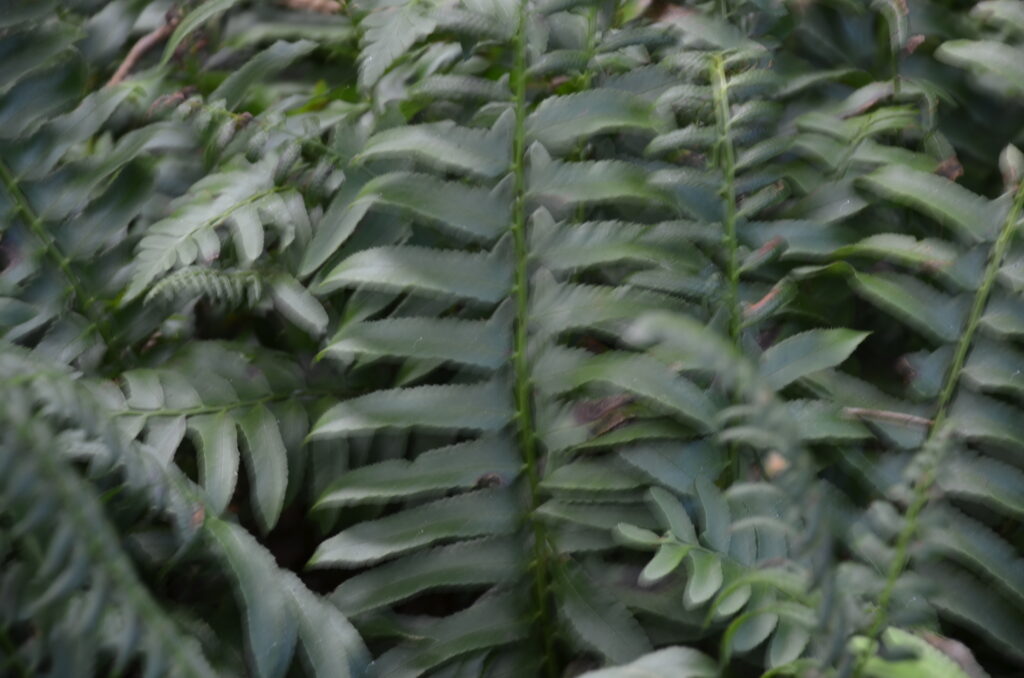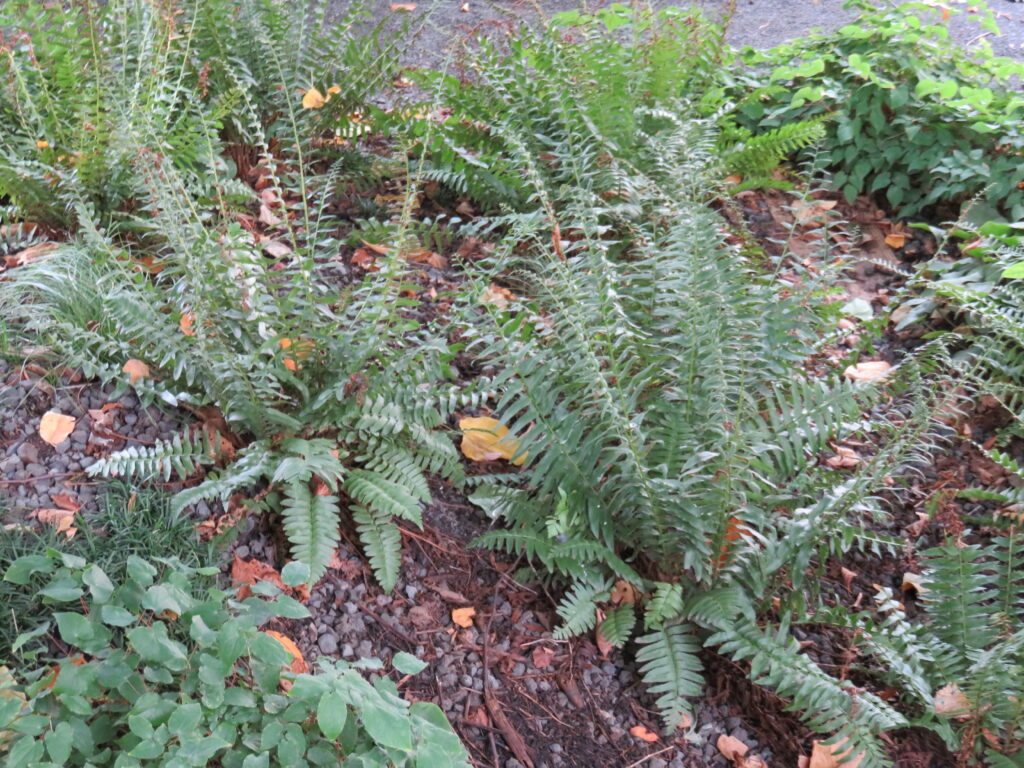
Christmas Fern (Polystichum acrostichoides) is an evergreen native fern that grows tough as nails. This native fern, also called the Christmas dagger fern, is indigenous to much of eastern North America; it grows in every U.S. state east of the Rocky Mountains (USDA hardiness zones 3 – 9). This durable fern has long been associated with Christmas, its evergreen fronds (foliage) once in popular use in making holiday wreaths. Fronds (foliage) provides winter landscape interest.
Christmas ferns are long-lived plants. They grow to about 18 – 24 inches tall and wide with all fronds emerging from a central crown. As the plant ages, it produces additional fronds, usually numbering 20 or so per plant. Transplant them almost any time that the ground isn’t frozen. They prefer light to full shade, although in most northern states can handle full sun. Plants grow larger in humus-rich soil and are not finicky if planted in heavy clay soil.
The base of the frond and the central crown is covered with brown scales. The fronds are pinnately compound, meaning there is a central axis with the individual leaflets (called “pinnae” in fern lingo). Pinnae are about 2 inches long but are proportionally smaller as you move down the midrib. Two rows of spore dots (sori) run down their length.
Christmas fern grows in a fountain-like clump with leathery, lance-shaped, evergreen fronds. In early spring, new fronds uncurl, and the old fronds wither away. Best grown in organically rich, dry to medium moist, well-drained soils in part to full shade. This rhizomatous fern does not spread or naturalize. Individual clumps increase in size over time.

Young silvery and scaled fiddleheads, referred to as “croziers”, appear in the spring. Sori, containing fruiting bodies of ferns, appear on the undersides of the pinnae only at the ends of the fronds.
Christmas ferns have no serious insect or disease problems. They are rabbit and deer resistant. Crown rot can be problematic in poorly drained soils, particularly during the winter.
Why Called “Christmas Fern”? If you pull off a single leaflet (pinna) and turn it horizontally, it looks like Santa standing up on the back of his sled; hold it vertically, it resembles a Christmas stocking or a mitten.

 Posted in
Posted in 
